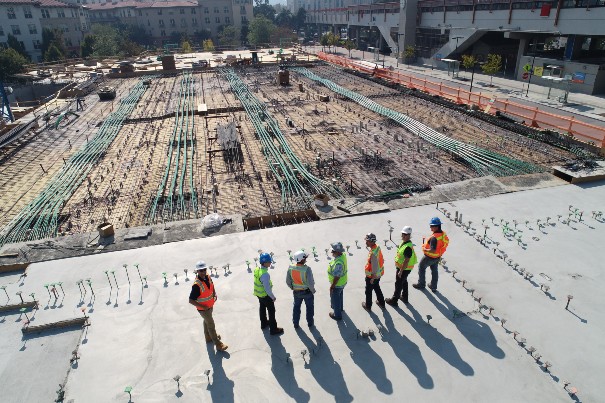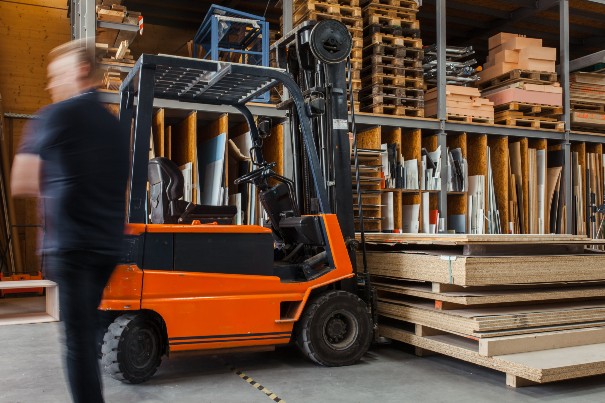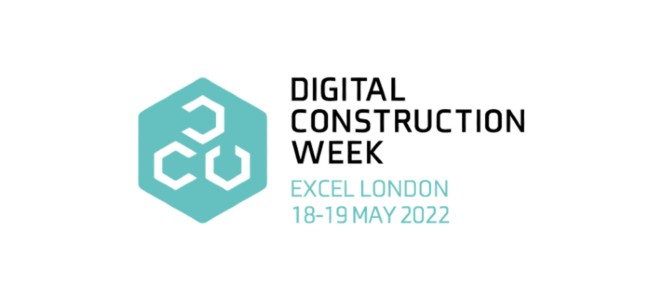May 06, 2022 Industry news
On 18-19 May 2022, over three hundred expert speakers, 150 inspiring brands, and thousands of the brightest minds in digital construction will come together at ExCel London to learn, innovate, and connect.
Among them will be GS1 UK’s construction engagement manager Rachel Heaton, who will be joined in the Transformation Hub by Phil Thompson, procurement data manager at NG Bailey, and Rodney Dass, FM digital lead at Fexillon, to explore the role of GS1 standards in the digitalisation of the construction industry.

Transforming construction
The construction industry currently faces significant challenges in becoming more efficient, increasing safety, improving productivity, and lowering costs. With new digital initiatives emerging all over the world these challenges are now being addressed, and the role of GS1 standards in the development of digital solutions is becoming more widely recognised.
Stakeholders are starting to invest in the digitalisation of their supply chains and processes, marking a drastic improvement from manual, paper-based processes in which data is scattered is across different databases that are difficult to access - if at all.
Powering progress
The use of GS1 standards is essential if stakeholders are to effectively capture, identify and share the information across the supply chain.
One such standard, the Global Trade Item Number (GTIN), can play a particularly vital role by both uniquely identifying any physical product, and capturing the necessary data surrounding it.

As a result, the GTIN has the potential to function as a fundamental building block for driving efficiency in the procurement and management of materials, throughout construction process and during maintenance or repair.
By encoding GTIN information into scannable barcodes or radio frequency identification (RFID) tags and applying them to building products, stakeholders can ensure access to consistent, accurate, and trusted data at every step of the supply chain.
This product data can be scanned at multiple points of use. GS1 standards are also interoperable, allowing information surrounding the procurement and management of materials to be shared between trading partners. This brings increased visibility, traceability, and certainty to building and asset information.

Boosting efficiency
Placing data standards at the heart of digitalisation has the potential to drastically improve productivity across industry.
By identifying and capturing their products in business-to-business databases, suppliers and manufacturers can increase the visibility of their brand or products, opening up new opportunities and securing new contracts.
In turn, businesses are provided with greater choice, enabling them to make more informed decisions and reduce costs. They can also prevent waste and reduce delays by ordering (or supplying) exactly what is needed and accurately tracking products to ensure the right materials arrive at correct location at the required time.
Improving safety
Safety and sustainability are becoming increasingly high on the agendas of businesses, governments, and consumers alike. In the UK, the Building Safety Bill recently received Royal Assent, introducing a raft of reforms designed to create “lasting generational change and a clear pathway for the future on how residential buildings should be constructed and maintained.”

The Bill’s requirement for a “golden thread” of information makes the use case for standardised data even stronger. Understanding what materials are used, when they are used and where, not only enables those within the industry to plan, monitor, and coordinate health and safety during the construction phase, it also enables them to ensure a building performs the way it should in the future.
Such transparency means that the procurement and management of materials, as well as maintenance and repairs, can be more effectively managed. In the event of, potential hazards being identified further down the line, it would also enable action to be taken as swiftly and effectively as possible.
Like many industries today, construction must also guard against illegal, out-of-date, and counterfeit materials. As global unique identifiers, GTINs can provide a full picture of all materials used, allowing stakeholders to assure quality and prevent unsafe products from ever entering the supply chain.

Protecting the planet
Globally, the construction industry uses 40 per cent of resources, produces 40 per cent of waste, and consumes 40 per cent of energy production. By significantly reducing unnecessary waste and boosting efficiencies, GS1 standards play a key role creating more sustainable supply chains.
In order to reuse, refurbish and recycle buildings and products, we need to know exactly which materials are involved. GTINs offer the visibility of products, parts and components required to develop truly sustainable strategies.
As well as tracking a product to its final destination, stakeholders can also use GTINs to confidently trace raw materials back to their origins.

Building a better future
By streamlining supply chains, improving sustainability, increasing transparency, and lowering costs, achieving digital transformation is vital if the construction industry is to solve many of the challenges it currently faces.
GS1 standards are already supporting businesses, government bodies and organisations across the world in achieving their goals, and their use in construction continues to gain momentum.
Projects are now underway in Australia, France, New Zealand, Norway, Sweden, Ireland, and GS1 UK looks forward to engaging and collaborating with stakeholders across the four nations to explore how digital solutions can be implemented.

Register for Digital Construction Week
On 18-19 May 2022 at ExCeL London, DCW will put the spotlight on the tech and tools solving the built environment’s most pressing challenges. Register for free and claim your place today.

Constructing the digital future with GS1 standards
Join this session to learn more about successful initiatives and the vital role GS1 UK is playing, as well as gain knowledge and insights to begin or advance your local journey.
